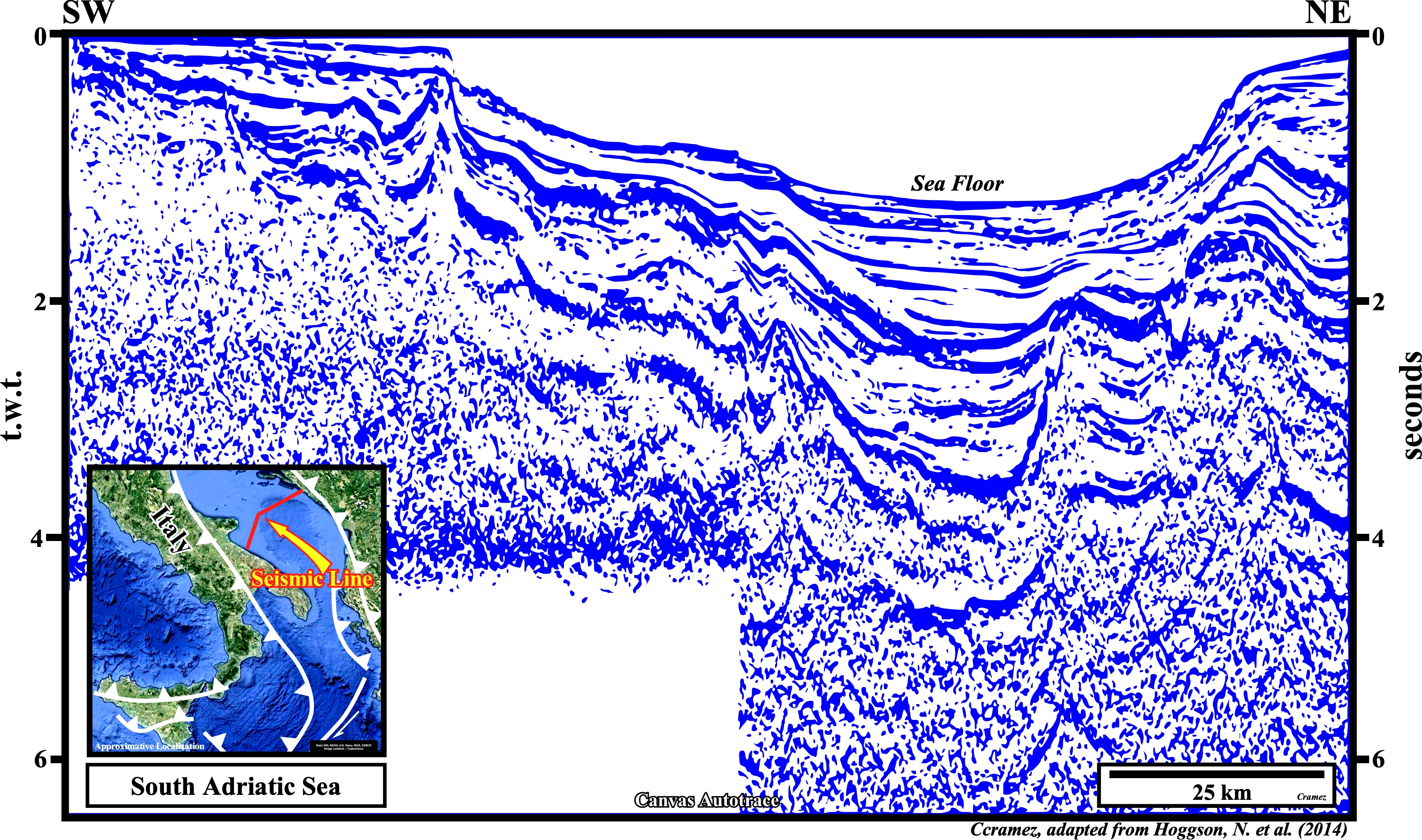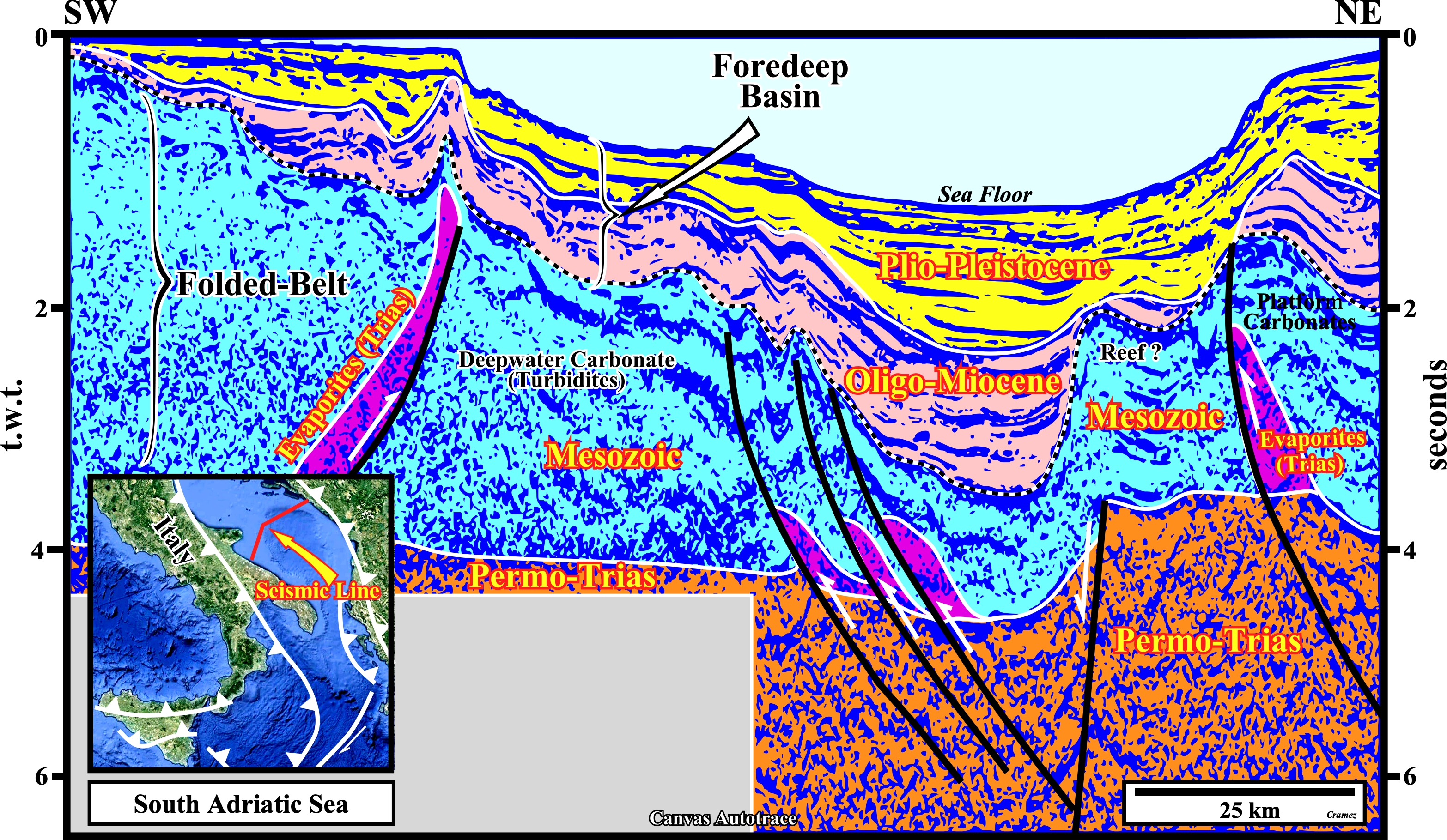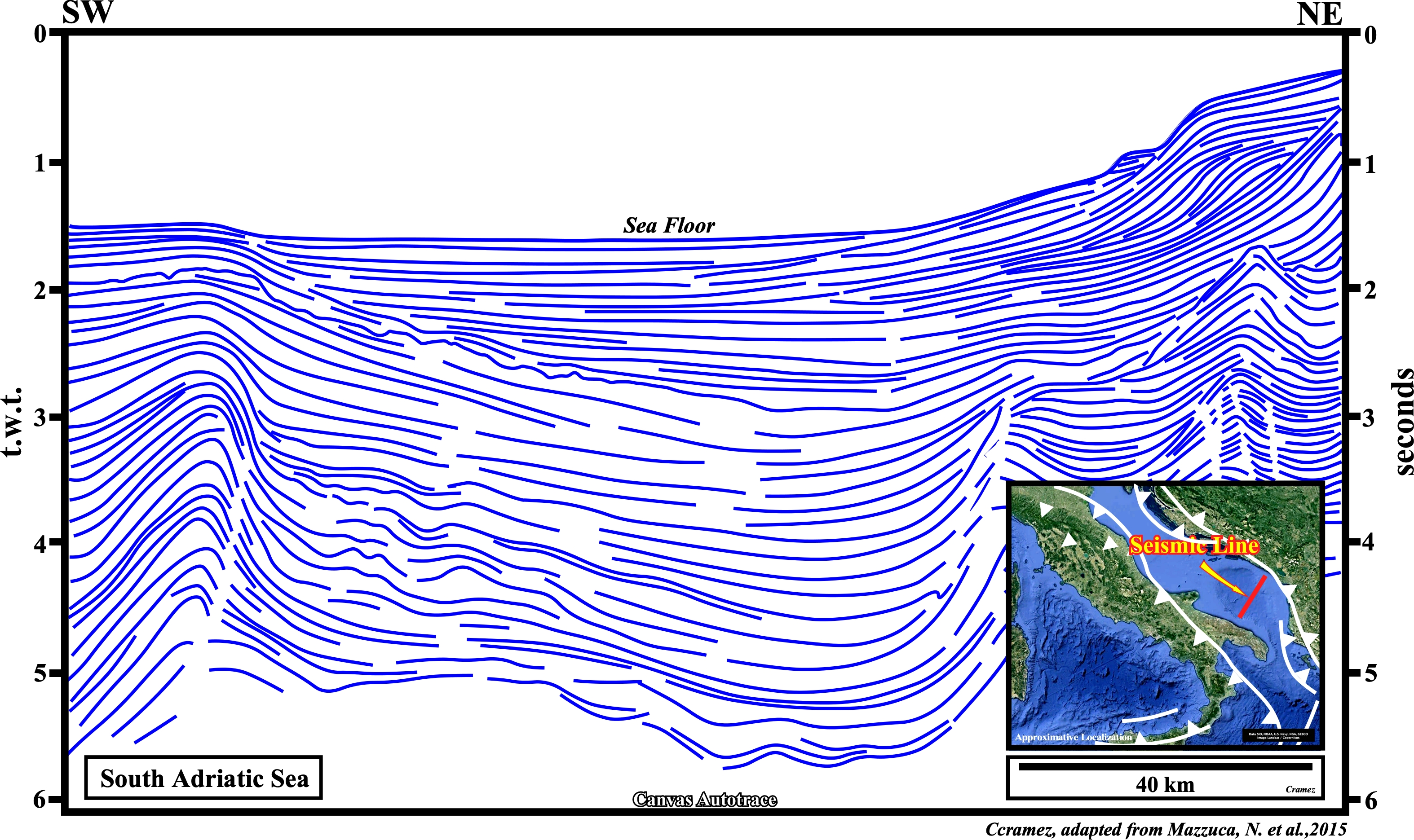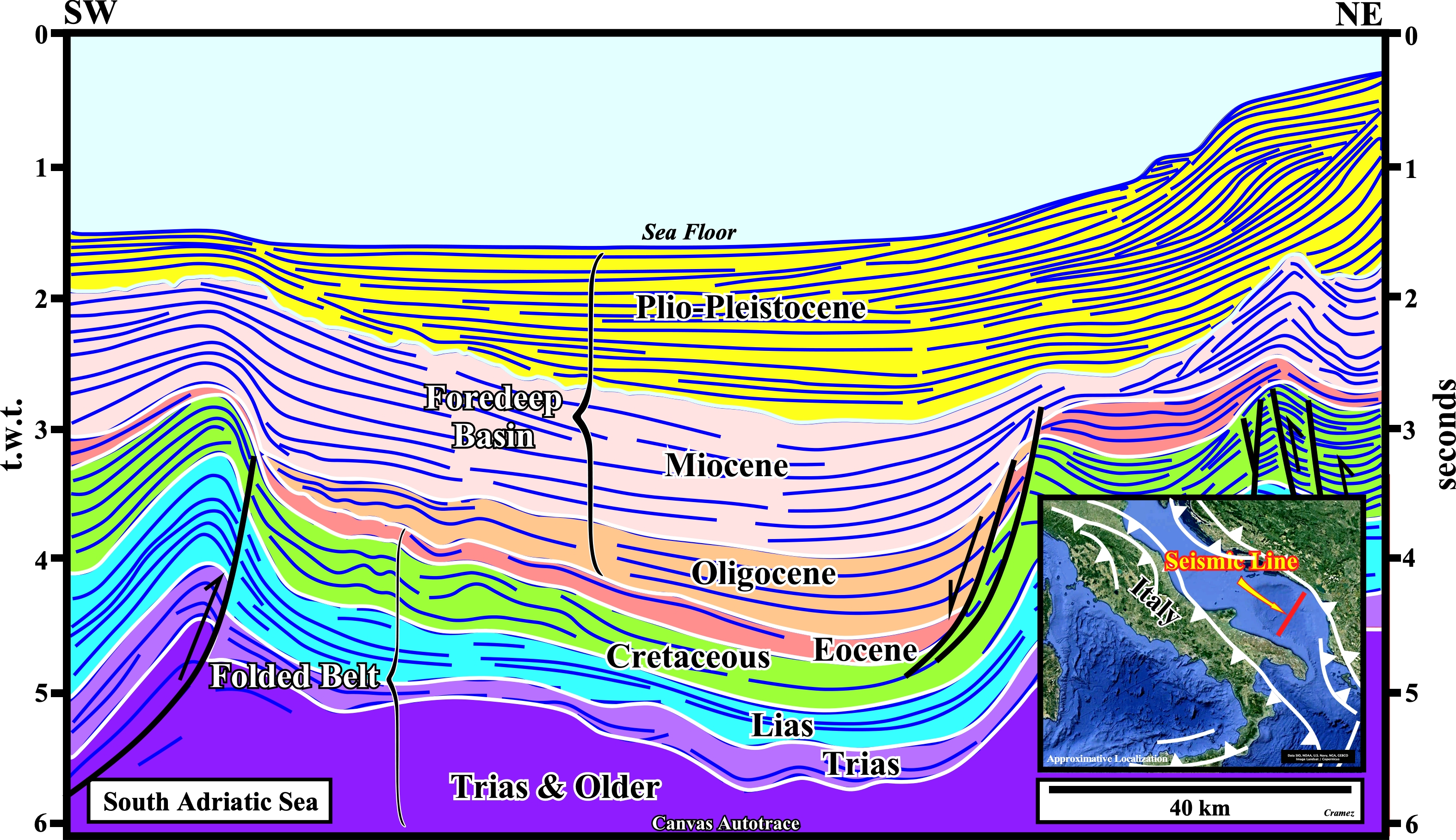

Mediterranean Offshore
South Adriatic Sea


A folded belt, i.e., linear or arcuate area characterized by compressional tectonic regimes tectonics, often refered "fold-and-thrust belt" to express the importance of thrusting in sedimentary shortening and Plio-Pleistocene foredeep basin (episutural basin induced by the lithospheric flexure created by the adjacent and more or less parallel fold belt) are easy recognized on this autotrace. Notice the presence of Triassic evaporites in the fold belt. Certain extensional uplift structures can be explained halokinesis.


The regional geology and tectonic history of the Croatian Adriatic basin is well described in the literature (Casero et al., 2012 ; Grandic et al., 2013 ; Shiner et al., 2013). The Adriatic geographic basin developed on the ‘Adria micro-plate’, on the stable western margin of Gondwana’ s Neo-Tethys, which began to rift and subside in the Permo-Triassic. The Permian to Anisian sequences show siliciclastic beds or limestones and dolomites, inter-bedded by salt and gypsum deposits. The Permian is correlated to wells and outcrops of onshore Croatia (Grandic et al., 2004 ). In the Carnian-Norian period, the main lithofacies in the Peri-Adriatic region were the Dolomia Principale/Burano formations from the extensive tidal zone to the evaporitic platform. The Burano evaporites (mainly salt and anhydrite) are present in the central and southern sectors of the Adriatic Sea (Matta Velli et al., 1991). The end of the Triassic and the Lower Jurassic is characterized by deposition of bituminous limestone inter-bedded with dolomite formations in syn-rift grabens. In the Middle Liassic, the main Tethyan rifting phase caused the break-up of the previously continuous carbonate platform (VlahovicC et al., 2005). As a consequence, two main pelagic domains were generated,the Umbria-Marche and South Adriatic Basins with limestone to siliciclastic sequences deposited from the Middle Jurassic until the Paleogene (CatiI et al., 1987 ). Two different carbonate platforms remained separated: the Dalmatian-Adriatic to the east-northeast and the Apulian to the southwest. Southwest verging Dinaric compression and thrust ing, similar to that affecting the Ionian basin to the south, affected the Dalmatian-Adriatic platform, developing a foredeep in the Late Eocene and Oligo-Miocene times. In a similar way, the east-vergent Apulian thrusting formed a foredeep during the Plio-Pleistocene (Wrigley et al. , 2014). Successive deltaic sequences commenced in the Paleocene until the present day, prograding from the Po valley of Italy and the Neretva River of Croatia, with little local ized sediment supply from demolition of the Dinaric thrust belt. The only exception is the evaporitic deposition during the Messinian. The effect of the Messinian salinity crisis was the generation of a clear and easily recognizable unconformity separating the Oligo-Miocene from the Plio-Pleistocene sequence. Bituminous limestone rocks deposited in the Upper Triassic and Early Jurassic syn-rift grabens can have high source rock potential as indicated and supported by Italian analogs.
Send E-mails to carlos.cramez@bluewin.ch with comments and suggestions to improve this atlas.
Copyright © 2001 CCramez
Last update:
2022